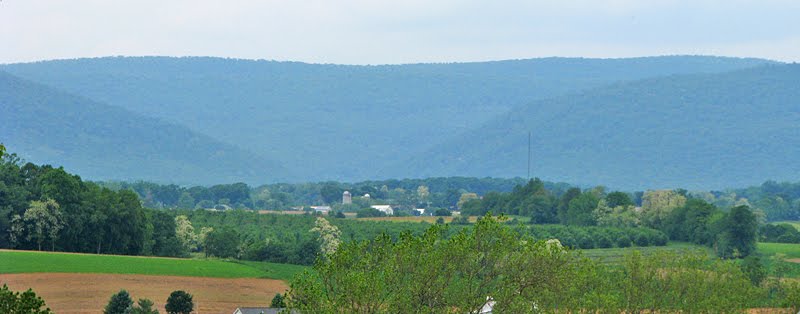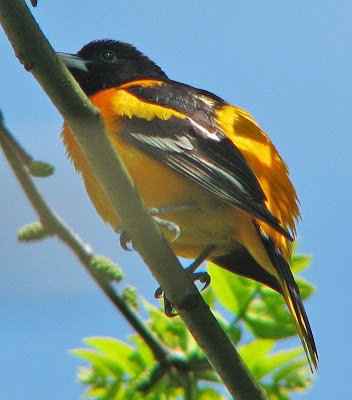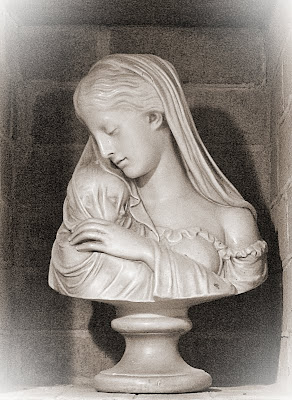I went walking up to Orrstown today, about 4 miles (6.4 km) northwest of downtown Shippensburg. There was an old Mennonite/Amish cemetery that popped up in one of my weekly email newsletters from Geocaching.com, and you know me and graveyards, I just had to go find it. So since I had two days off in a row this week and the weather was decent, I picked today to go.
It was a goodish hike up there, and it was a little tough to find, being at the end of a dirt road off Orrstown Rd. in an area where most of the roads off Orrstown Rd. are dirt. But thanks to a kindly Old Order Mennonite lady named Mrs. Zimmerman who I bumped into along the road, I was able to pick the right dirt road. (And isn't it a wonderful coincidence that a Mrs. Zimmerman was my good luck on the birthday of yet another Zimmerman, one Robert, aka Bob Dylan!)

It's fairly plain and undistinguished. Most of the stones in the foreground are earlier, from the 1800s, and are plain, unpolished limestone or granite with simple lettering and little or no ornamentation. They very much reminded me of the Quaker cemetery and gravestones in Newport (which I did
a post on 3 years ago) in their simplicity; not much of a surprise there, as both religious groups prize simplicity and plainness above all else, and it was William Penn, the Quaker founder of Pennsylvania, who invited the German Anabaptist Brethren (Amish, Mennonites, German Baptists, etc.) to settle in his colony and escape persecution for their beliefs and lifestyle in the old country.
What really captured my attention was the large number of infant gravestones, something that was also painfully common back in the colonial cemeteries of Newport. It was a tough life back in the 17th, 18th, and 19th centuries, and the high infant mortality rate was one sign of that.



Note that the two 20th century stones are a bit more ornamental than the Minich sisters stone of the early 19th century. The stone for the son of Walter and Amanda Gettel (notice the lack of a name for the child even though he was 5 years old) has a characteristic "Pennsylvania Dutch" dove of peace design carved into it. But it's the stone for Dena Viola Meyers that intrigued me the most; the stone's shape is certainly interesting - the heart shape of the upper part of the stone with the palm fronds incised under it - but it's the lettering that's so fascinating. It's pure Art Deco! I suspect the grieving parents got hold of a carver outside their religious community, one who was more up-to-date in his aesthetic influences. It's still very simple lettering, but far more "stylistic" than your average Amish gravestone. I so love anomalies like this!
There were a lot more child and infant graves in this cemetery, but the rest of them were more like the Minich sisters' stone. Some had square tops rather than arched, and most of them were much smaller than the surrounding adult stones. But all of the stones, adult and child, shared the same simplicity seen in the Newport Quaker stones - name and dates, but no epitaph or symbolism. There's such beauty in starkness like that!
And speaking of beauty... I'll leave you with three shots of the beautiful scenery up Orrstown way, the top one looking east toward South Mountain and the bottom two looking west toward Blue Mountain and Broad Mountain (and Big Gap between them). Enjoy!


 © 2011 by A. Roy Hilbinger
© 2011 by A. Roy Hilbinger






































.jpg)


























